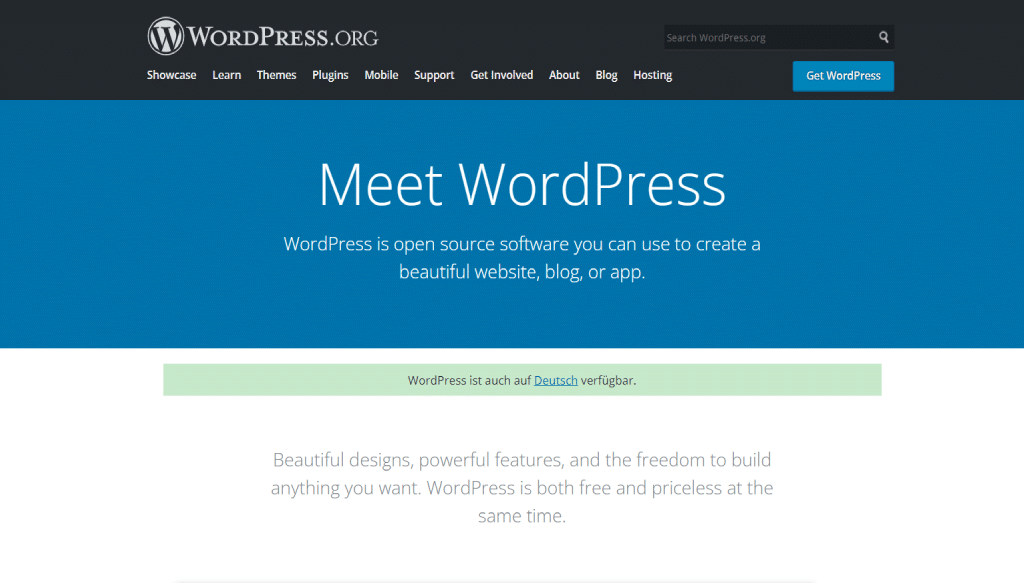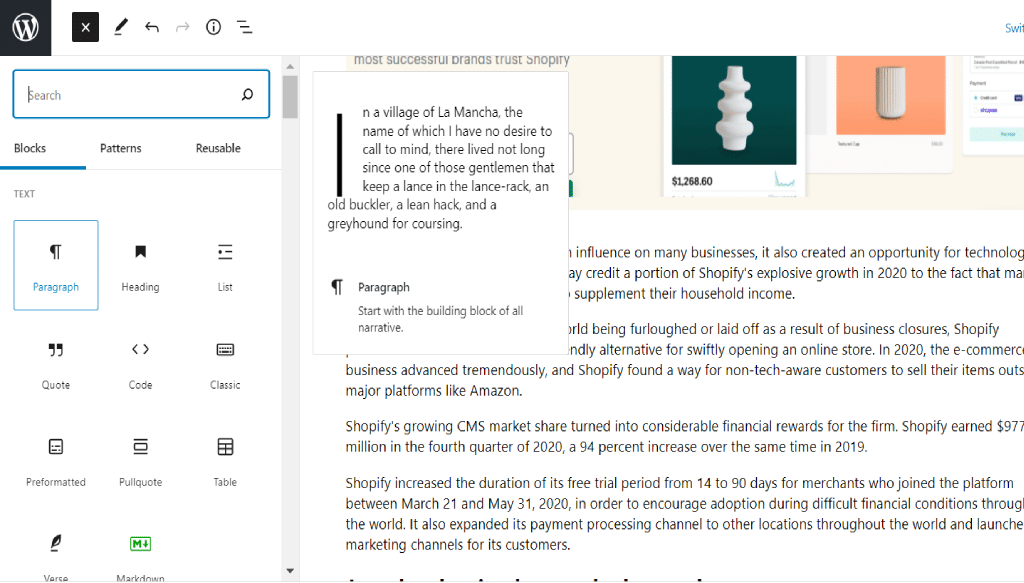CMS Market Share in 2021 Globally
The CMS market is quite competitive. With options ranging from self-hosted to fully-hosted and everything in between, determining which CMS is best for you can be difficult. In our in-depth guide below, you can learn mor...

What CMS Platform is the most popular in 2021?
WordPress maintains its position as the most widely used Content Management System (CMS). However, the CMS market underwent significant changes between 2020 and the beginning of 2021. Despite the fact that WordPress is a behemoth, competing platforms are still vying for market dominance, and their numbers are rising.
Depending on the sort of website or project you’re working on, there are hundreds of CMS systems to select from. However, when it comes to CMS market share, just a few firms stand out.
Before we go into specific platforms, let’s have a look at the top 10 CMSs in 2021 based on worldwide market share:
| CMS | Market Share | |
| 1 | WordPress | 64.7% |
| 2 | Shopify | 5.4% |
| 3 | Joomla | 3.3% |
| 4 | Squarespace | 2.5% |
| 5 | Wix | 2.4% |
| 6 | Drupal | 2.3% |
| 7 | Bitrix | 1.6% |
| 8 | Blogger | 1.5% |
| 9 | Magento | 1.1% |
| 10 | Opencart | 1.1% |
CMS platform competition isn’t fierce – and it hasn’t been for a long time. WordPress powers more than 60% of all CMS-powered websites. Even outside of these platforms, WordPress powers more than 40% of all websites worldwide.
Despite WordPress’ dominance in the CMS industry, it’s worth noting that even a 1% market share equates to millions of websites. Magento, for example, is one of the most popular CMS platforms among corporate sites, although it “only” has a 1% market share.
To comprehend the evolving landscape of CMS market shares, we must look at historical statistics and examine how those figures have altered in recent years. With that in mind, we’ll focus on 2020 market share statistics in particular, because COVID had (and continues to have) a long-lasting influence on technology uptake.
Shopify’s market share has risen dramatically
Shopify has a market share of roughly 3.7 percent in April 2020. One year later, the e-commerce CMS achieved a market acceptance rate of roughly 5.4 percent. That’s a 1.7 percent increase in a year, which is nearly unheard of in the CMS industry.

Although the COVID epidemic had an influence on many businesses, it also created an opportunity for technological companies. In that perspective, we may credit a portion of Shopify’s explosive growth in 2020 to the fact that many customers needed to find a means to supplement their household income.
With millions of people across the world being furloughed or laid off as a result of business closures, Shopify positioned itself as the most user-friendly alternative for swiftly opening an online store. In 2020, the e-commerce business advanced tremendously, and Shopify found a way for non-tech-aware customers to sell their items outside of major platforms like Amazon.
Shopify’s growing CMS market share turned into considerable financial rewards for the firm. Shopify earned $977.7 million in the fourth quarter of 2020, a 94 percent increase over the same time in 2019.
Shopify increased the duration of its free trial period from 14 to 90 days for merchants who joined the platform between March 21 and May 31, 2020, in order to encourage adoption during difficult financial conditions throughout the world. It also expanded its payment processing channel to other locations throughout the world and launched new marketing channels for its customers.
Joomla adoption has reached a new low.
Joomla is still one of the most popular CMS platforms in the world, but its market share has been in a fast fall for the last decade – a trend that is expected to continue through 2020 and into 2021.
Joomla had a commanding 12 percent market share among CMS platforms at the start of 2010. In 2021, that figure will have fallen to 3.3 percent.
| Year | Joomla Market Share |
| 2015 | 8.6% |
| 2016 | 7.5% |
| 2017 | 7.2% |
| 2018 | 6.5% |
| 2019 | 5.4% |
| 2020 | 4.6% |
| 2021 | 3.3% |
For a long time, Joomla was seen as WordPress’s most direct rival. It provides a versatile system with extensive documentation, a large library of extensions, and an active community. Most significantly, it is a CMS geared at developers, which has earned it a devoted following.

However, by definition, Joomla is not as user-friendly as other CMS platforms like WordPress or even Shopify. It has a steep learning curve, which makes it a less appealing option in 2021 when most platforms tout about how simple they are to use, even if you’ve never written a single line of code.
Despite its decline in popularity over the years, Joomla still retains a sizable market share when compared to systems with comparable user bases, such as Drupal and Magento. Most significantly, the Joomla community is still alive and well.
Nonetheless, if Joomla fails to update its vision in order to reach a larger audience, its market share will likely continue to decline as users migrate to more user-friendly CMS systems.
Squarespace and Wix continue to maintain the market shares
When most people think of Squarespace and Wix, they think of page-builder software. While this is debatable, both Squarespace and Wix include CMS capability. In a word, this is what distinguishes them from solely design-based services.
Squarespace and Wix are the only CMS platforms that have mainly maintained their respective market shares from 2020 to 2021. The former fell from 2.7 percent to 2.5 percent, while Wix increased from 2.3 percent to 2.4 percent.
To put those figures into context, consider the market share of each CMS platform over the last six years:
| Year | Squarespace | Wix |
| 2016 | 0.8% | 0.4% |
| 2017 | 1.1% | 0.6% |
| 2018 | 1.5% | 0.9% |
| 2019 | 2.6% | 1.8% |
| 2020 | 2.7% | 2.3% |
| 2021 | 2.3% | 2.4% |
Wix adoption has historically been slower than Squarespace’s growth. Wix, on the other hand, caught up to its biggest competition between 2019 and 2021. Most notably, it has grown marginally over the last year, whereas Squarespace has lost a little portion of its market share.
Although Wix and Squarespace are fairly equal in terms of features, Wix does have an advantage in a few areas. Squarespace, for example, does not provide website backup capability beyond allowing users to export data, which is unprecedented for a CMS in 2021.
Furthermore, Wix offers superior support for multilingual websites.

It’s also worth mentioning that Wix has lower entry-level plans than Squarespace, despite the latter doing a far better job in terms of marketing.
We predict both of these CMS platforms to stay basically neck and neck in terms of market share in the near future.
WordPress maintains its dominance in the CMS market share
WordPress continues to outperform rival CMS platforms, and this trend is unlikely to reverse very soon.

There is no other CMS that comes close to matching its popularity. Even when the market shares for the other nine leading platforms are added together, they still fall short of WordPress’ vast userbase.
We’ll be the first to confess that we have a bias when it comes to utilizing WordPress. Even if you’re not a WordPress fan, it’s clear to understand why this CMS’s market share is increasing year after year.
WordPress has radically changed the way most users approach website creation in the last several years. Users may now design pages using a much more visual approach thanks to the new Block Editor:

As WordPress gets more popular, it becomes simpler for new users to embrace the CMS, thus cementing its position as the market leader. More users mean a more profitable environment for WordPress developers and service providers, who all work together to make the platform more accessible.
Since roughly 2016, WordPress’ market share has increased by about 1% every year. From 2020 to 2021, the figure grew from 62.1 percent to 64.7 percent, exceeding predictions.
In conclusion
If you’re thinking of starting a website or looking for a new CMS, WordPress is your best bet. It comes with a CMS that may be used for almost any form of project, from blogging to e-commerce.
Because WordPress is open-source, you may install it on whatever hosting platform you choose and alter it any way you see appropriate. You may also select from thousands of easy-to-install plugins and elegant themes to increase the functionality and aesthetic of your website.
Was this post helpful? ( Answers: 0 )
Leave a comment
If you enjoyed this post or have any questions, please leave a comment below. Your feedback is valuable!